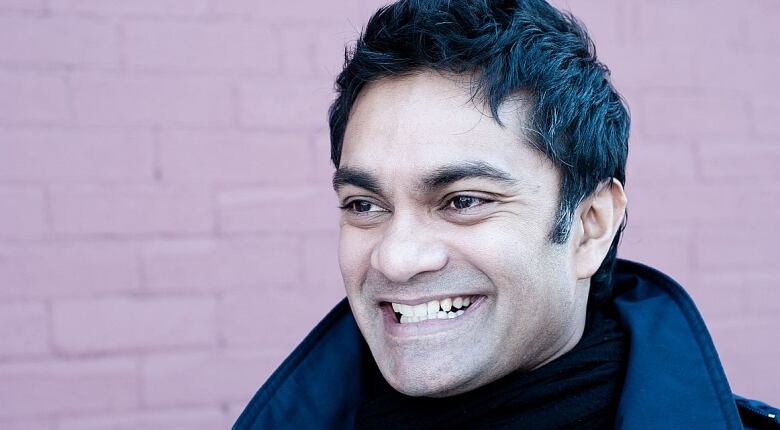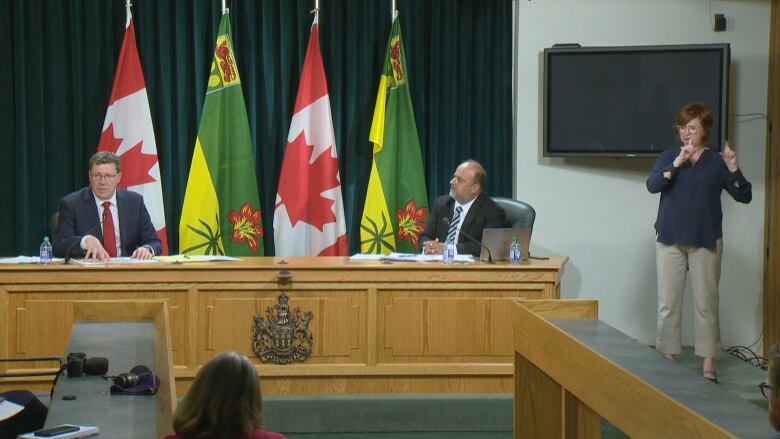Saskatchewan one of top per-capita testers for COVID-19 in Canada: Premier Moe
Cases found rose to 86 on Wednesday

Saskatchewan is testing more people for COVID-19 than most provinces, according to the premier. The number of tests will likely continue to climb, as the province's chief medical health officer says requirements for patients to get tested for COVID-19 are being loosened.
On Tuesday, after four cases were attributed to community transmission, Dr. Saqib Shahab called for changes to the testing parameters that would see people who have COVID-19-like symptoms get tested, even if they have not travelled internationally within the past 14 days.
"This is an important inflection point in terms of these other cases we were expecting," Shahab said of those cases of community transmission on Tuesday. "Based on that, we will be making some further recommendations today about further increasing testing for people who have not traveled."
The potential change is welcome for Dr. Raywat Deonandan, a global-health epidemiologist and an associate professor at the University of Ottawa, who said more testing should be happening across the board.

Dr. Deonandan saidCOVID-19 is a "health system crisis" as opposed to a "health crisis," noting a health system crisis can be addressed through available resources, investment and leadership while a health crisis requires a cure or vaccine.
"Testing is a low-tech option that exists right now in the world, we just need more of it," he said. "One of the reasons that many communities in Canada aren't doing as much as testing as we'd like is simply because we don't have the resources."
Deonandan said there is a global push for COVID-19 tests and as a result, they have to be used in the most efficientway possible.
Saskatchewan has currently found 51 more casesthan its neighbour to the east. Saskatchewan has found a total of 86 cases while Manitoba has found 35.
Deonandan said it's too soon to determine if Saskatchewan has become a hotspot for the virus, as it's possible there could be a delay between the number of cases present in Manitoba and the number recorded.
"Remember, the case data that you're seeing are lagging indicators of the true burden of disease," he said. "Manitoba might actually be on par with Saskatchewan we don't know ... so it's a wait and see game right now."
Premier Scott Moesaid on Wednesdaythat Saskatchewan is one of the country's leaders when it comes to testing, noting this could be one factor behind the high number of positive tests.
"We've done the second highest per-capita level of testing in the nation," he said. "The only province that has done more testing per capita is the province of Alberta and that may speak to the counts that we have, the positive IDs that we have."

Steven Lewis, a health-policy consultant and health services researcher from Saskatchewan who now lives in Australia, has been monitoring Saskatchewan's response from abroad. He said Saskatchewan has been faring as well as it can be.
"If you look at Saskatchewan's rate, which is about approaching 6,000 per 1,000,000 people, that's about as high as the rate of testing is anywhere in the world right now as of March 20," said Lewis, touching on how South Korea, which has beenlargely able to contain the virus, had a rate of a 6,100 tests per million.
"Places like Italy it was half that a few days ago, Even in Guangdong, China, it's about half of Saskatchewan's rate," he said. "So I think the short answer is we're not doing too badly. The real question though is is it enough."
Josef Buttigieg, an associate professor of biology at the University of Regina, has been following the COVID-19 trends as a side project over the last few weeks.
He saidSaskatchewan should also be testing people for antibodies produced after they've come in contact with the virus.
"Once you start determining how much of the population has had it, now we can identify the true spread of this through the population," he said. "Do we need to isolate more individuals? Do we need to quarantine more? Do we need to restrict more of the population."
Buttigiegsaid the data would help government and health officials plan for the future, as having an idea of how many people have been exposed will help them plan moving forward.
"We need more information," said Buttigieg. "Right now, we just don't have that information to be able to determine have we flattened the curve?"












_(720p).jpg)


 OFFICIAL HD MUSIC VIDEO.jpg)
.jpg)



























































































